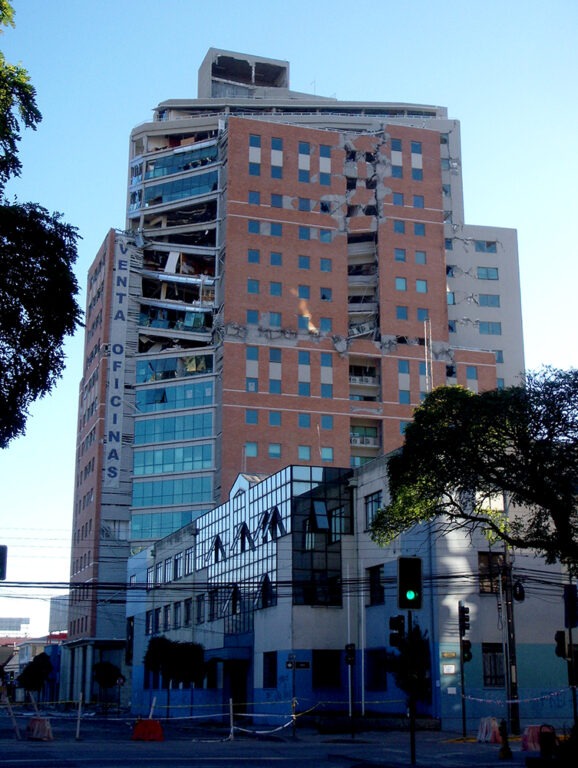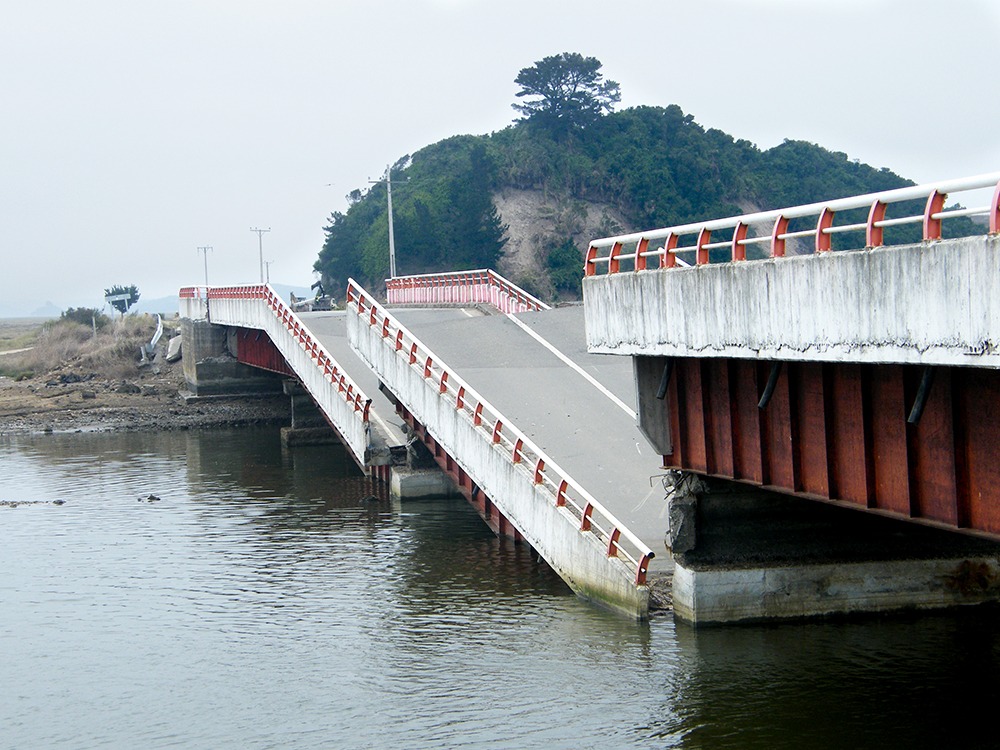For some residents of Northern California, 2023 began with a rattle: a 5.4 magnitude earthquake centered off the coast on New Year’s Day. This seismic activity followed a nearby 6.4 magnitude quake in December, which killed two, damaged roads and buildings, and disrupted utility service for thousands.
In contrast to the Pacific Northwest, California has more frequent and memorable earthquakes. But the recent quakes in California occurred near the southern end of the Cascadia Subduction Zone (CSZ), providing a reminder of the Pacific Northwest’s need to prepare for a danger that, while less visible, is critical to the region’s resilience. The Pacific Northwest must get ready now for the “big one” — a massive megathrust earthquake that could devastate communities from Northern California through southern British Columbia. Oregon and Washington will likely see catastrophic infrastructure damage, and although many businesses and jurisdictions in both states have taken steps to prepare, much more work remains.
Current data suggest that the Pacific Northwest is overdue for a potentially 9-plus magnitude CSZ earthquake and subsequent tsunami, like those that ravaged Chile in 2010 and Japan in 2011. Scientists say there is a 37 percent chance of a CSZ earthquake of 7 magnitude or higher in the next 50 years. Evaluations completed by experts in Oregon and Washington predict widespread damage and casualties, including deaths caused by collapsing unreinforced or under-reinforced masonry and concrete schools, historic downtown buildings, and other structures. These evaluations also anticipate widespread damage to utilities and transportation systems.
If long-term planning in Oregon and Washington does not sufficiently address seismic resilience, the region will take decades to recover from a Cascadia disaster. Businesses will fail or relocate, residents will move away, and, without a tax base, local agencies will have trouble rebuilding. Tourists and business travelers will stop coming to the booming cities of Seattle and Portland.
Therefore, it is imperative that jurisdictions, and the businesses and organizations in them, get ready now. Efforts to sufficiently address seismic resilience can clearly protect people and infrastructure, but they are also essential for business continuity and can help meet broader sustainability goals: To consider itself sustainable, any operation in the Pacific Northwest should consider how it will prepare for and respond to this predicted natural disaster.

The potential impact of the big one: thousands of deaths, infrastructure failure, decades to recover
Roughly a decade ago, both the Oregon and Washington legislatures sponsored resilience plans related to the CSZ. These plans make the following predictions related to a major quake:
- Utilities — including electricity, water, wastewater, and natural gas services — will remain out for months, if not years (typical business continuity planning assumes that businesses can withstand no more than two weeks without essential services).
- The region’s transportation infrastructure — already aging and poorly rated under normal conditions — will not perform well.
- Potentially thousands of casualties and total destruction will occur in tsunami inundation areas.
As the Oregon plan summarizes, in that state alone, “available studies estimate fatalities ranging from 1,250 to more than 10,000 due to the combined effects of earthquake and tsunami, tens of thousands of buildings destroyed or damaged so extensively that they will require months to years of repair, tens of thousands of displaced households, more than $30 billion in direct and indirect economic losses (close to one-fifth of Oregon’s gross state product), and more than one million dump truck loads of debris.”
More recent research has highlighted other grim potential impacts. For example, a 2020 study commissioned by Multnomah County and the City of Portland found that a CSZ earthquake could result in the release of up to 190 million gallons of fuel currently stored along the Willamette River — more than 2010’s BP Deepwater Horizon spill, currently the largest marine oil spill in US history.
How can businesses and jurisdictions achieve resilience in the face of a major CSZ earthquake?
The CSZ scenario includes an overwhelming list of damage and problems, and it is understandable that communities faced with this list may find building resilience a formidable and expensive task. Many of these challenges seem impossible to solve in a timely way, especially given current funding limitations.
But the scale and complexity of the problem do not allow for businesses and jurisdictions to ignore it. Fortunately, both Oregon and Washington created the plans referenced above to address these challenges, and they include performance targets to achieve adequate resilience and the steps necessary to meet them. The Oregon and Washington resilience plans propose a 50-year timeline for significantly increasing the region’s sustainability, and they propose putting seismic resilience at the forefront of planning. The Oregon Department of Transportation (ODOT) and Washington State Department of Transportation (WSDOT) have both started down the path to transportation resilience.
ODOT provides a good example for organizations working to make resilience an affordable and attainable goal. After completing a large-scale evaluation of its systems in 2010, the department set priorities based on infrastructure quality, anticipated damages, and public interests after a CSZ event. ODOT has incorporated these priorities into its overall master improvement plan. As funding becomes available, new infrastructure project designs should include seismic considerations, and repairs and upgrades should take seismic standards into account to create large, more resilient sections of their systems. Furthermore, with ODOT’s seismic evaluation and agency resilience plan in place, the department strengthens its position when applying for funding to support upgrades.
Other organizations can follow a similar path for seismic resilience planning:
- Start with a comprehensive assessment of existing infrastructure and systems to determine resilience, looking at factors such as whether structures were originally constructed to meet the most recent seismic guidelines, how long operations could persist with disruption to utility services, and how accessible the area might be to emergency services.
- Then develop a plan to implement the changes necessary to achieve resilience goals. Developing this plan means prioritizing changes based on the severity of the issue, the availability of funds and/or resources to address it, and the ease of completing the change.
- When planning new buildings or other infrastructure projects, factor the additional cost of designing and constructing for seismic resilience into the lifecycle cost analysis. Truly resilient projects will save money and reduce future negative impacts when considering the potential magnitude of required repairs after the expected CSZ event.
These steps can also feed into broader sustainability planning. In the Pacific Northwest, the concept of sustainability — which organizations and the public often define in the context of climate change and resource use — must include earthquake resilience. A “sustainable” building constructed with the intention of saving energy and costs over the next 20 to 50 years but not designed to be usable after the quake is not a sustainable building.
Combining environmental sustainability and seismic resilience can also lead to economies in mitigation and greater results on both fronts. For example, for one client in the region, we are evaluating how its campus can run independently of local infrastructure in the aftermath of a major quake: e.g., by installing microgrid solar panels, sourcing alternative fuels for generators, implementing a grey water reuse system, and installing on-site tanks for potable water. These solutions would also save costs and natural resources.
Our team at Haley & Aldrich can help agencies and private organizations evaluate their resilience related to the CSZ earthquake and tsunami and tie seismic resilience plans to broader sustainability goals.
Please contact us to learn more.

Senior Associate, Climate Resilience Specialist

Senior Project Manager
Published: 3/6/2023




